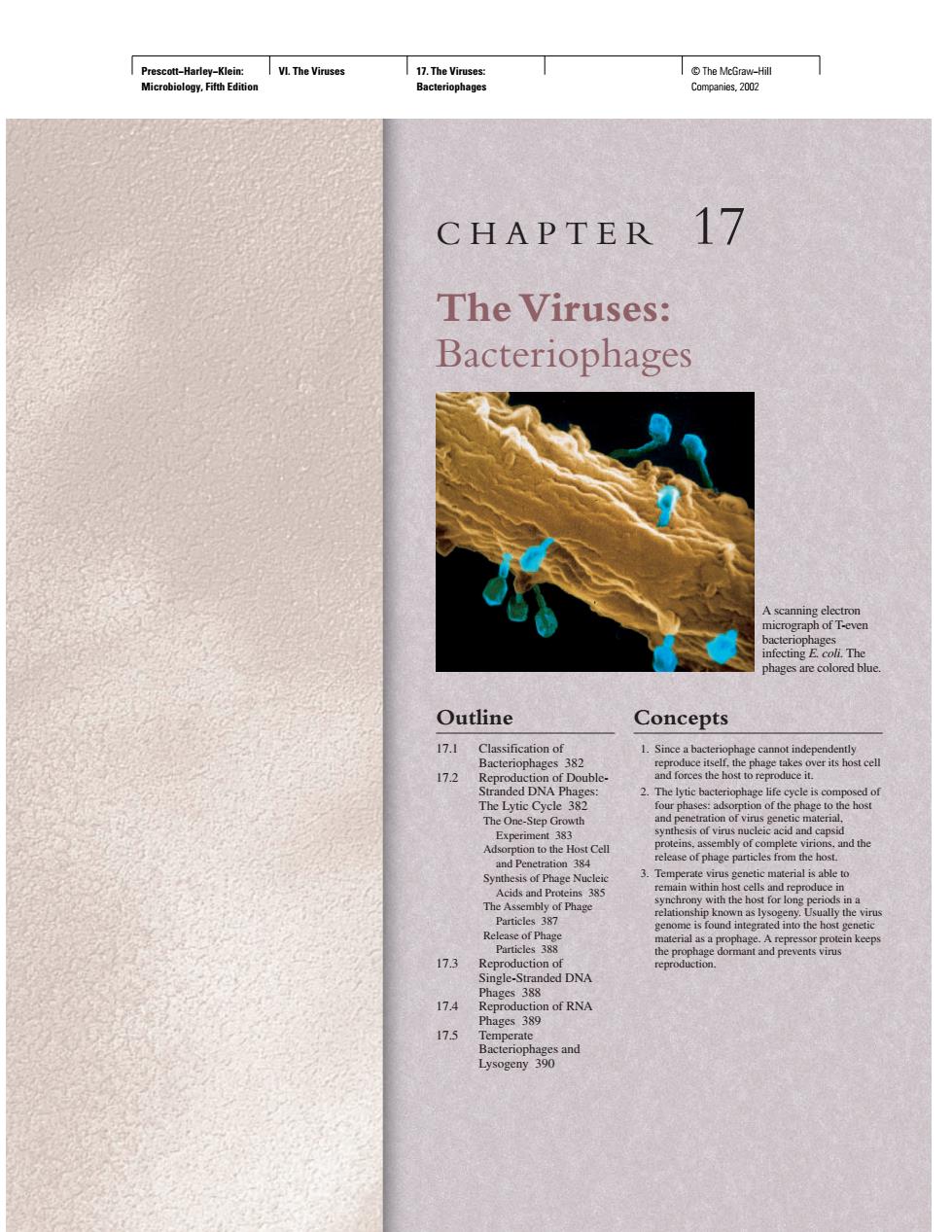正在加载图片...

we 8e2 17 The Viruses: Bacteriophages re colored bl Outline Concepts 17.1 Classification o 17.2 id pr of Phage Nu th 173 ction DNA es388 174 389 of RNA 175 Prescott−Harley−Klein: Microbiology, Fifth Edition VI. The Viruses 17. The Viruses: Bacteriophages © The McGraw−Hill Companies, 2002 CHAPTER 17 The Viruses: Bacteriophages A scanning electron micrograph of T-even bacteriophages infecting E. coli. The phages are colored blue. Outline 17.1 Classification of Bacteriophages 382 17.2 Reproduction of DoubleStranded DNA Phages: The Lytic Cycle 382 The One-Step Growth Experiment 383 Adsorption to the Host Cell and Penetration 384 Synthesis of Phage Nucleic Acids and Proteins 385 The Assembly of Phage Particles 387 Release of Phage Particles 388 17.3 Reproduction of Single-Stranded DNA Phages 388 17.4 Reproduction of RNA Phages 389 17.5 Temperate Bacteriophages and Lysogeny 390 Concepts 1. Since a bacteriophage cannot independently reproduce itself, the phage takes over its host cell and forces the host to reproduce it. 2. The lytic bacteriophage life cycle is composed of four phases: adsorption of the phage to the host and penetration of virus genetic material, synthesis of virus nucleic acid and capsid proteins, assembly of complete virions, and the release of phage particles from the host. 3. Temperate virus genetic material is able to remain within host cells and reproduce in synchrony with the host for long periods in a relationship known as lysogeny. Usually the virus genome is found integrated into the host genetic material as a prophage. A repressor protein keeps the prophage dormant and prevents virus reproduction